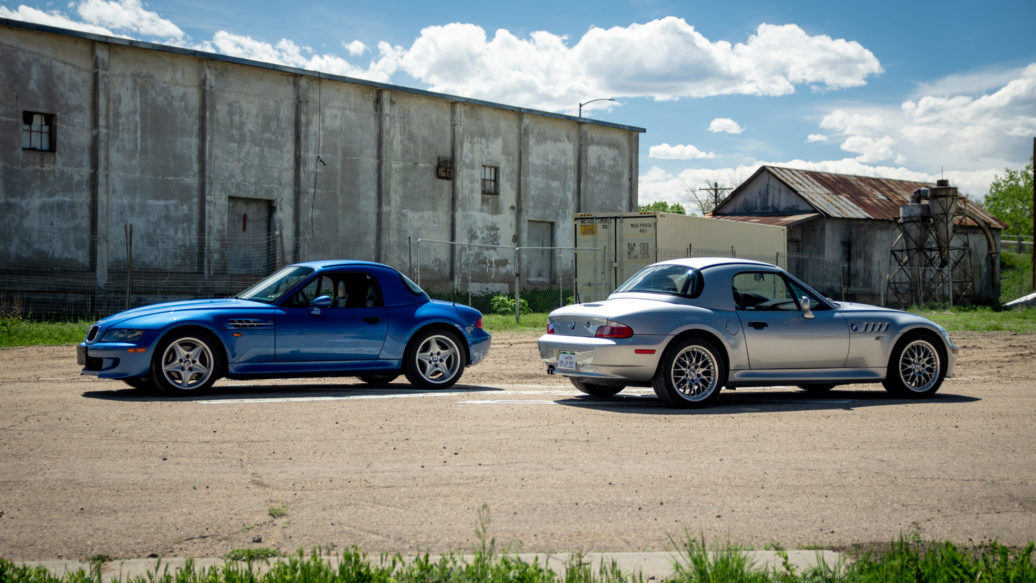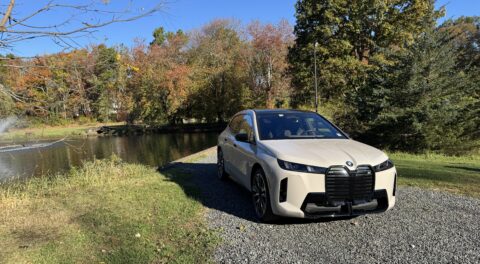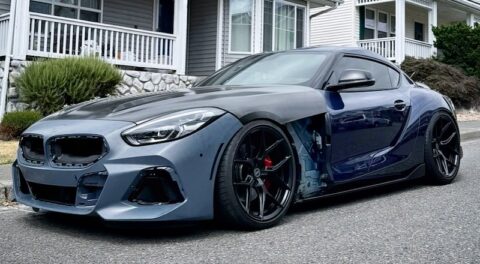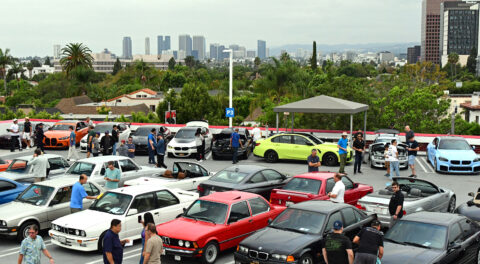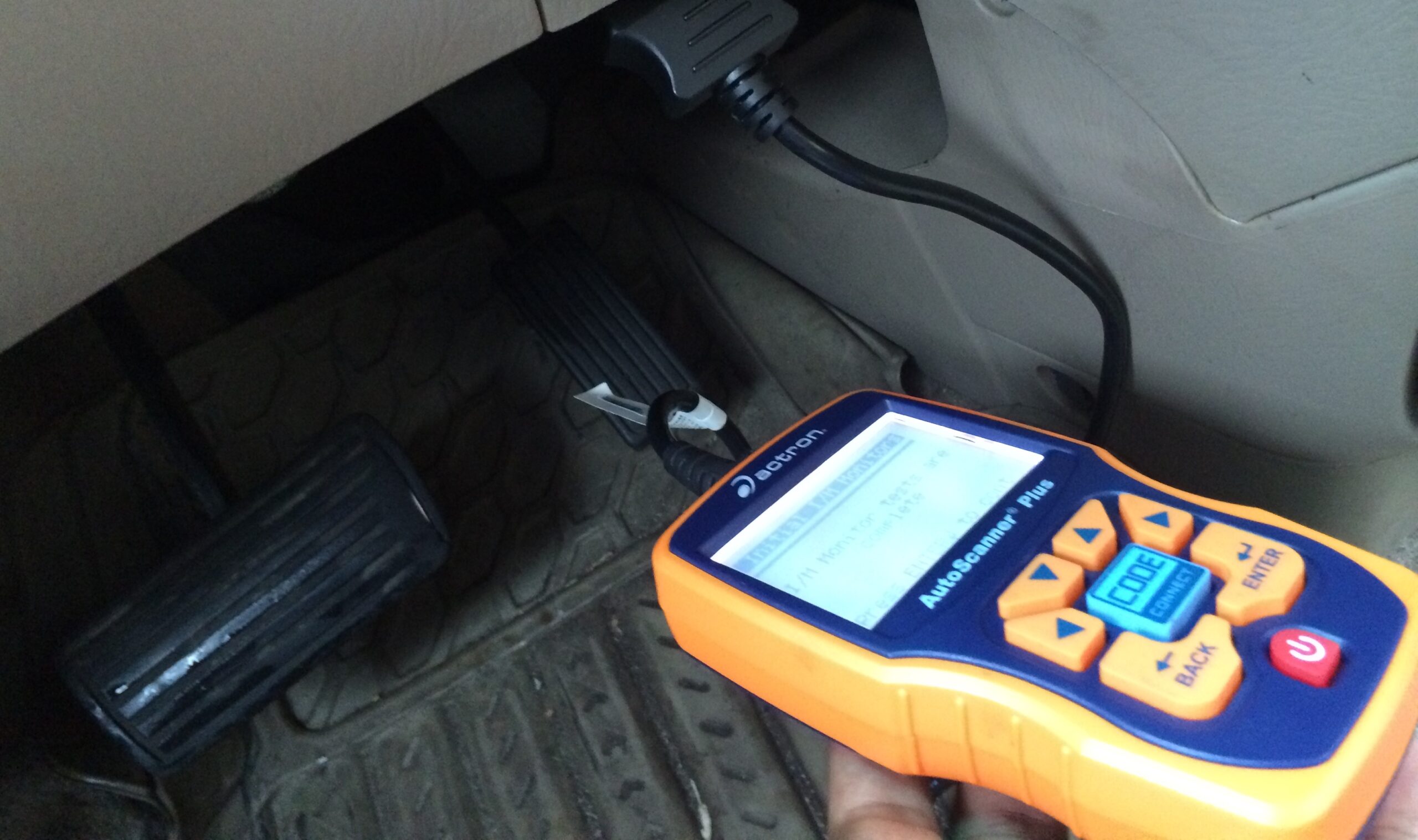The BMW Z3 premiered to the world in the 1995 James Bond film GoldenEye. In that flick, Pierce Brosnan, as 007, and the insatiably seductive Natalya Simonova (Izabella Scorupco) drove an Atlantic Blue Z3 that would eventually become a Neiman Marcus James Bond special-edition Z3. The scene was brief but impressionable, with Simonova’s hair blowing in the wind as the pair drove off to defeat the antagonist Alec Trevelyan (Sean Bean) at his evil satellite lair.
The movie was great, but as it faded off of the summer blockbuster charts, the Z3 only improved. Some two-and-a-half decades later, the Z3 has aged into a modern classic with grace and elegance. That evil satellite lair, not so much—but that’s another story.
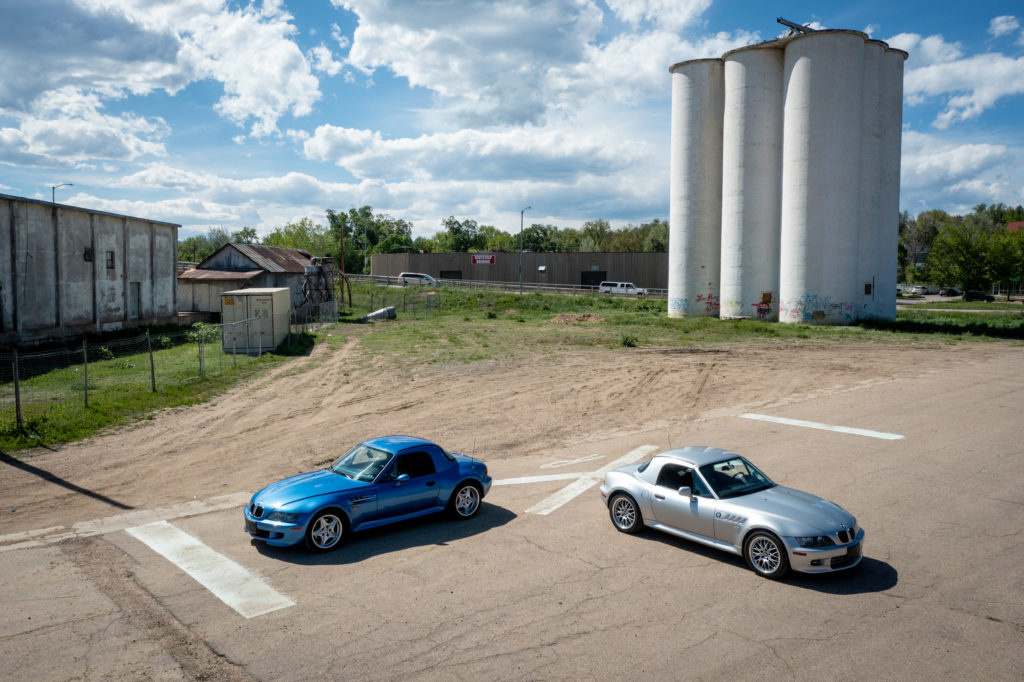
The S52-powered M roadster and M54-powered Z3 3.0i have striking similarities.
In the U.S. market, initial sales of the M44 1.9-liter four-cylinder Z3 were strong, but the subsequent M52 six-cylinder 2.5-liter (confusingly badged as a 2.3) and 2.8-liter engines livened up the model lineup significantly. In 2001, for the last two years of production, the Z3 got the E46’s 2.5-liter and 3.0-liter M54 engines, making the Z3 3.0i the top non-M Z3.
In 1998, M GmbH debuted its own version of the Z3 with the M roadster. Model years 1998 through 2000 used the E36 M3’s S52 engine, which was followed the E46 M3’s S54 engine for the final two years of production, 2001 and 2002. The latter is the most potent, collectable, and expensive Z3 roadster, but the current market is kind across the spectrum of Z3 variants. The S52-powered M roadster and M54 Z3 3.0i have strikingly similar performance, and depending on the condition of each, can be had for similar prices. A few months ago, I happened to have an example of each; they sold for nearly identical numbers.
This isn’t a win-or-lose comparison, since both examples were utterly fantastic, and if not for my M coupe, I would have been equally happy with either. The Z3 3.0i’s M54B30 and M roadster’s S52B32 engines have a twelve-horsepower difference (228 to 240), but what is perhaps more notable is the four-pound-foot torque difference (221 to 225). Out in the real world, torque is what you feel. Z3 3.0i’s were typically optioned with the sport package, which closed the gap with the standard M roadster thanks to options that include a three-spoke M steering wheel, sport seats, seventeen-inch wheels, and a limited-slip differential. That narrows the differences between my two examples to mere nuance.
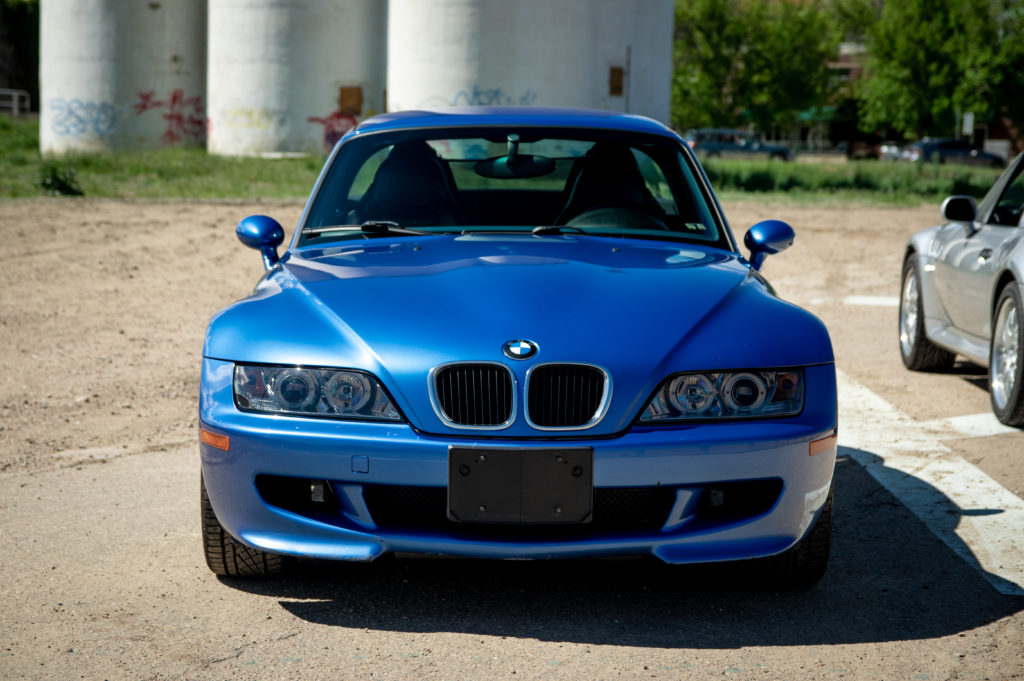
The M roadster features a unique front bumper cover and aerodynamic mirrors.
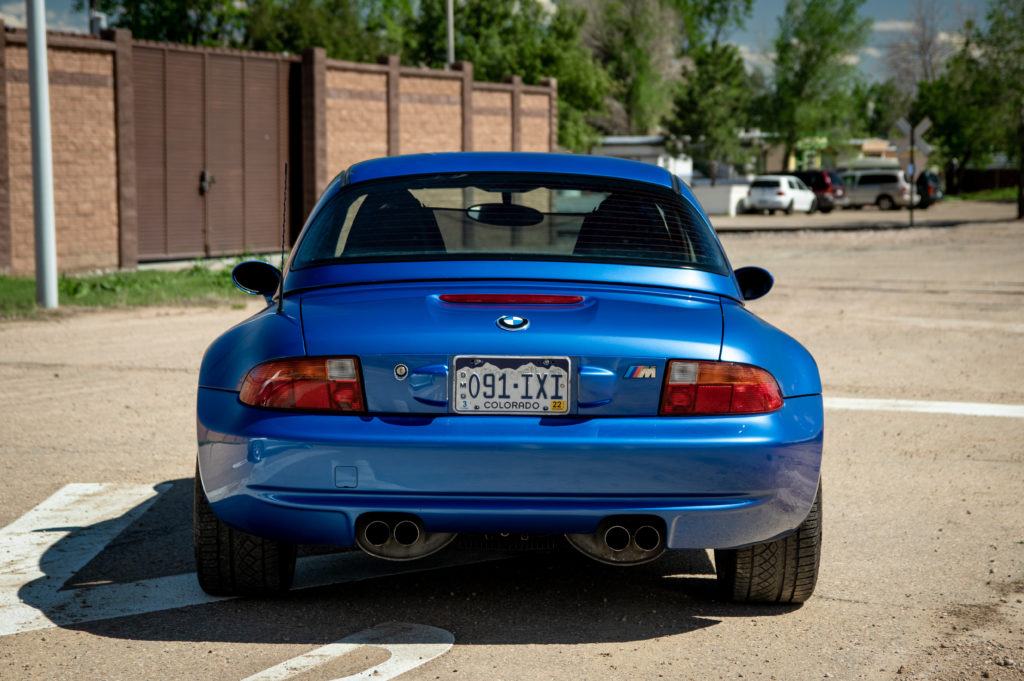
All M roadsters retained the pre-facelift unraised rear fenders and a quad-tip exhaust.
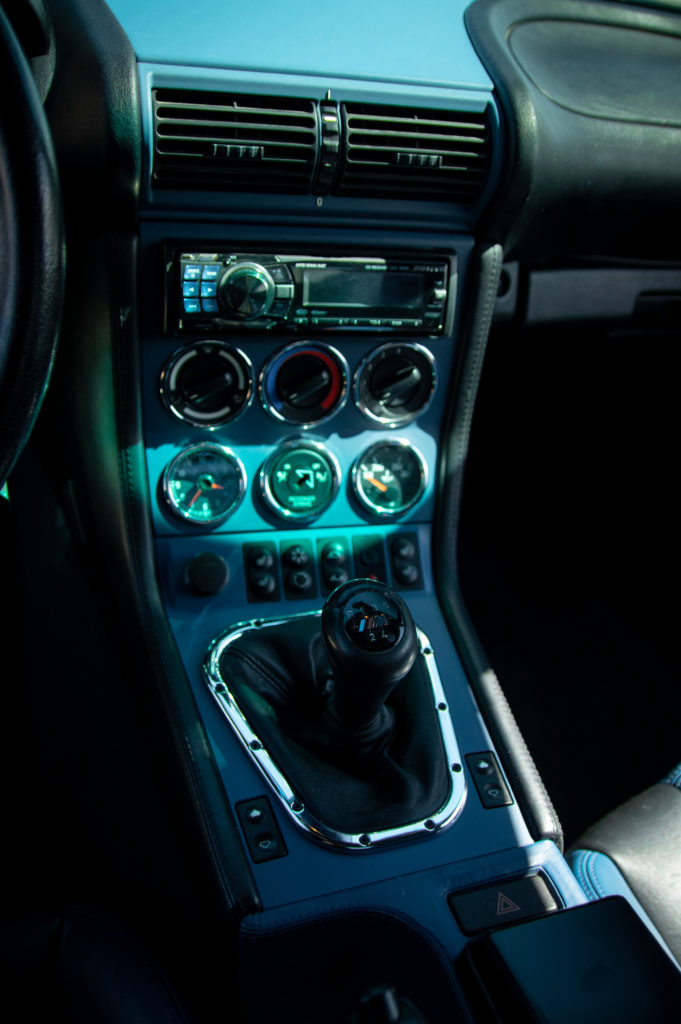
The M roadster had more gauges and a different seat pattern than the Z3 3.0i.
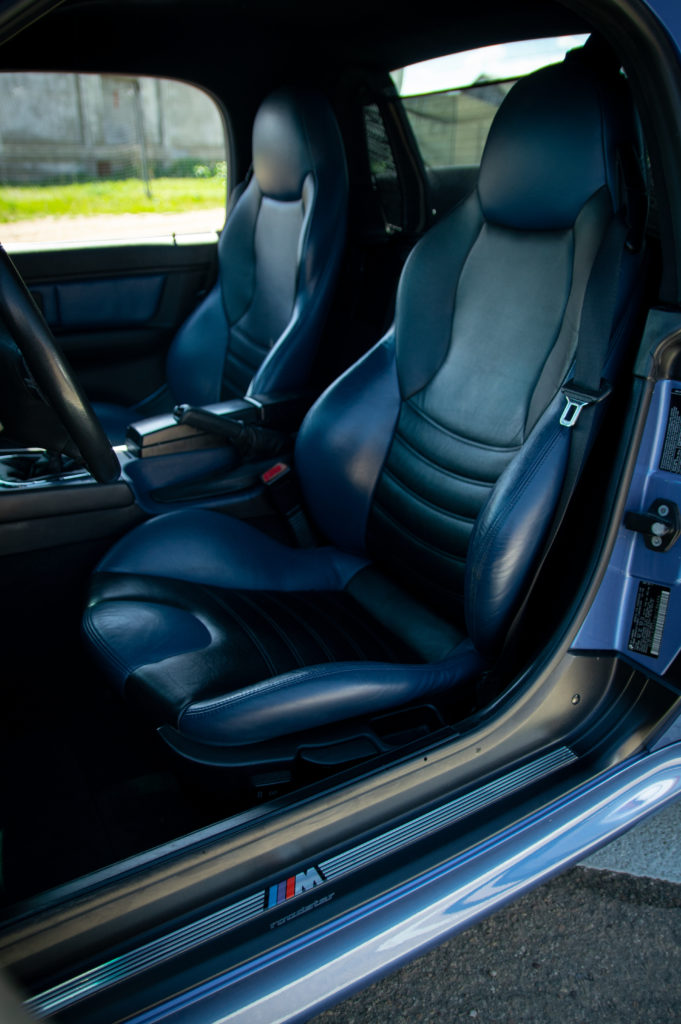
The M roadster was an early 1998-model-year example finished in Estoril Blue over a blue-and-black leather interior. The M roadster was unabashedly offered in some vibrant color combinations, and Estoril Blue was one of the best; a matching Estoril Blue hardtop is one of the best visual improvements you can make to a Z3. Besides the engine, it shares the brakes and front suspension with the E36 M3. Some distinguishing aesthetic M differences are small splitters integrated into the front bumper cover, chrome trim through the side gills, sleeker mirrors, a quad-tip exhaust, a trunk-mounted license plate, round rear fenders that were never raised during the life-cycle impulse (LCI), and Style 40 roadster wheels. Inside, the seat leather pattern is unique, M roadster script and badging abound, and temperature and voltmeter gauges were added next to the clock in the lower center console. (The latter was not yet available when this early M roadster was ordered, but it was offered as a cost-free dealer retrofit.)
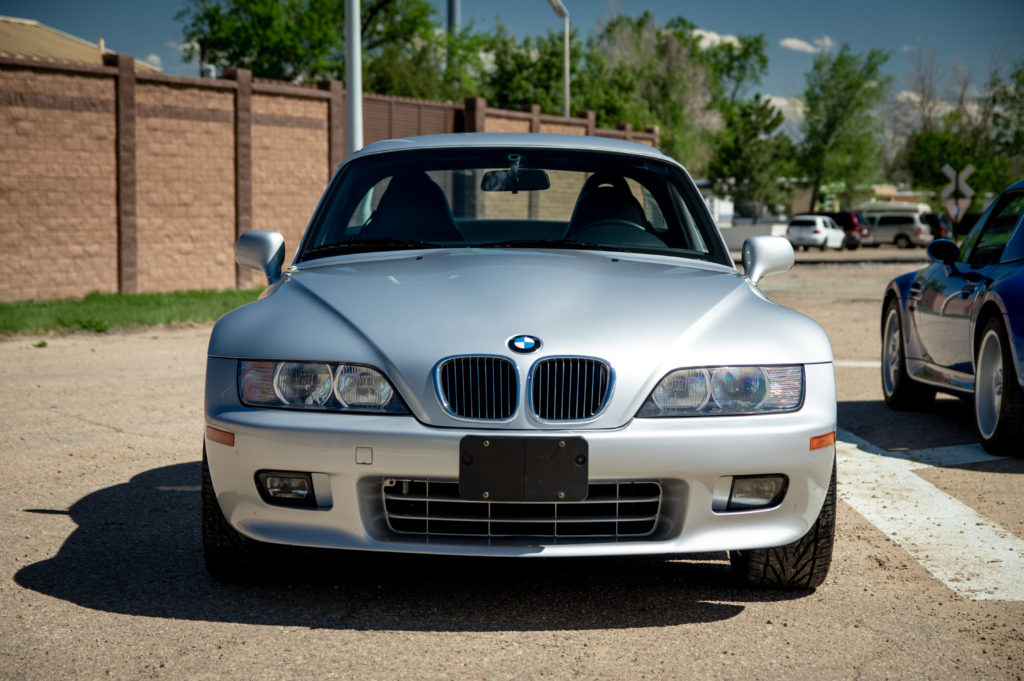
The Z3 3.0i has fog lights and “flag” mirrors.
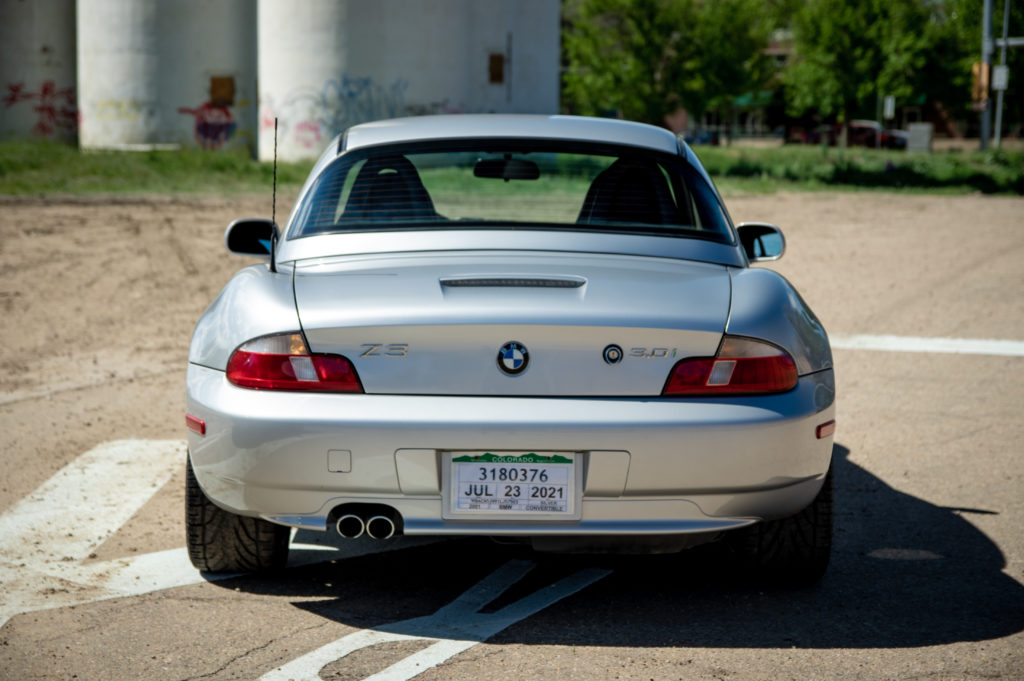
The post-facelift fenders have hips, and a single exhaust allows room for a spare tire.
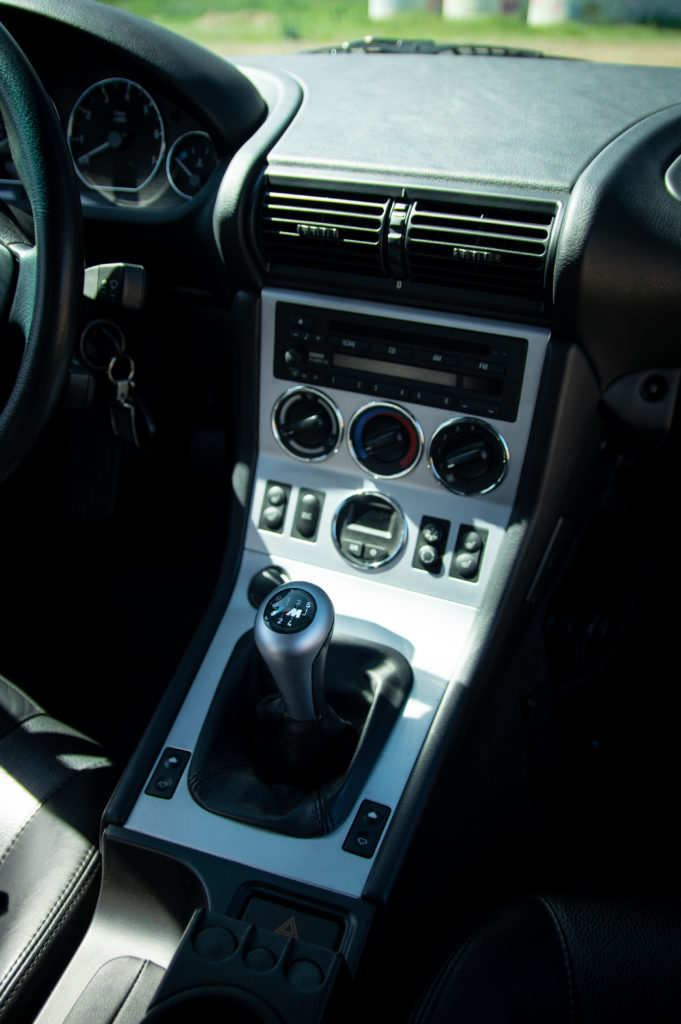
The Z3 3.0i’s center console is less cluttered than the M roadster’s.
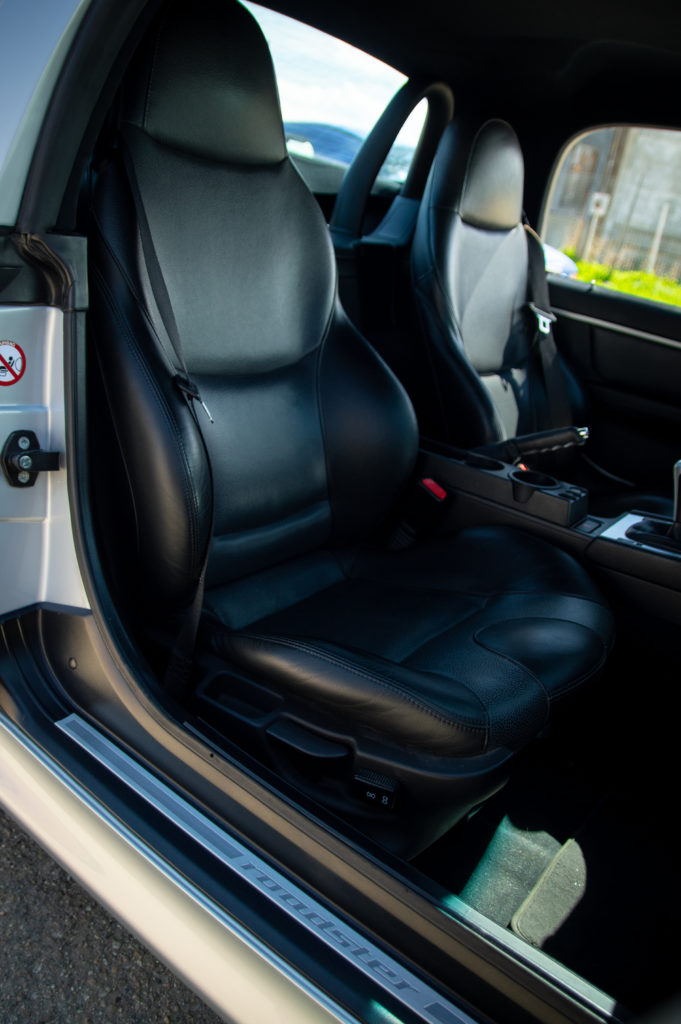
Sport seats are a must for any Z3.
The Z3 3.0i was a 2001-model-year example that was ordered to spec in Titanium Silver Metallic over black leather with a matching hardtop. The original owner further optioned it with a five-speed manual gearbox, heated sport seats, chrome-line interior trim (in lieu of the more common wood trim), a limited-slip differential, and Style 42 wheels. The Z3’s flag-shaped mirrors aren’t as sleek as the M roadster’s, but they do offer better visibility. A single digital clock gauge resides in the center of the lower console, which is less cluttered than the M roadster’s triple gauges. As a result, the console trim has more area around the switches, which tends to crack in the M roadster. A single dual-tip exhaust isn’t as sporty as the M roadster’s, but it does allow room for the license plate on the lower bumper cover and a spare tire underneath.
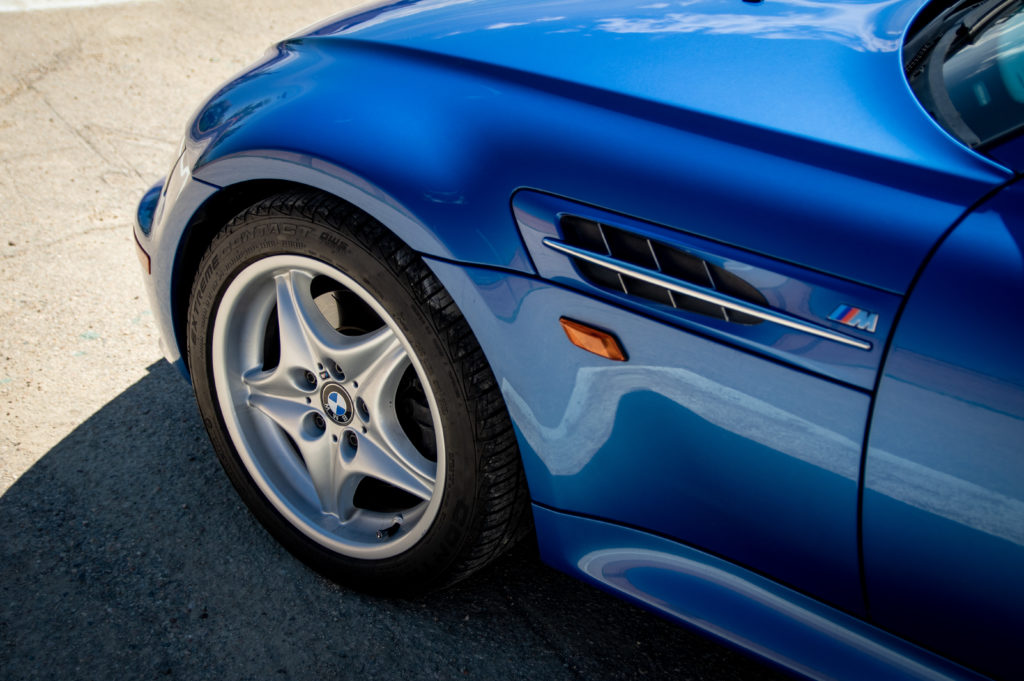
The M roadster came with Style 40 wheels and chrome trim in the side gills.
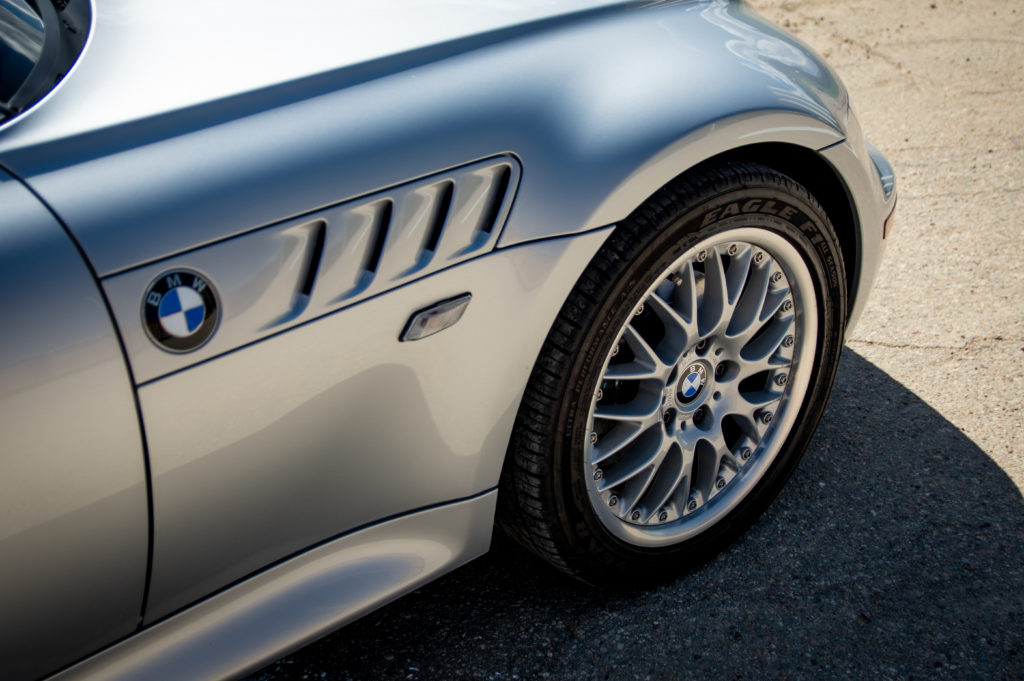
The Z3 3.0i’s Style 40 two-piece wheels are some of the best that BMW ever offered.
Quietly perusing the lines of each at an abandoned grain depot, my overriding impression was how truly beautiful both cars are. In the retro-roadster craze of the 1990s that was started by the Mazda Miata, BMW nailed it with the Z3 form. Its proportions are perfect, its form is unapologetic, and it pays the most faithful homage to great roadsters of the past. The hardtops tidy up the roofline and accentuate body curves, but neither roadster is worse with the top down. The M roadster is the more aggressive of the pair, of course, and I prefer its original rear hips and fat rear tires, but the post-lifecycle flares on the Z3 3.0i harken the Jaguar E-Type’s iconic hips. One of the few BMW wheel designs I prefer to the M roadster’s Style 40s is the Style 42 of the Z3 3.0i. In fact, the STyle 42 may be one of the best wheel designs BMW has ever offered.
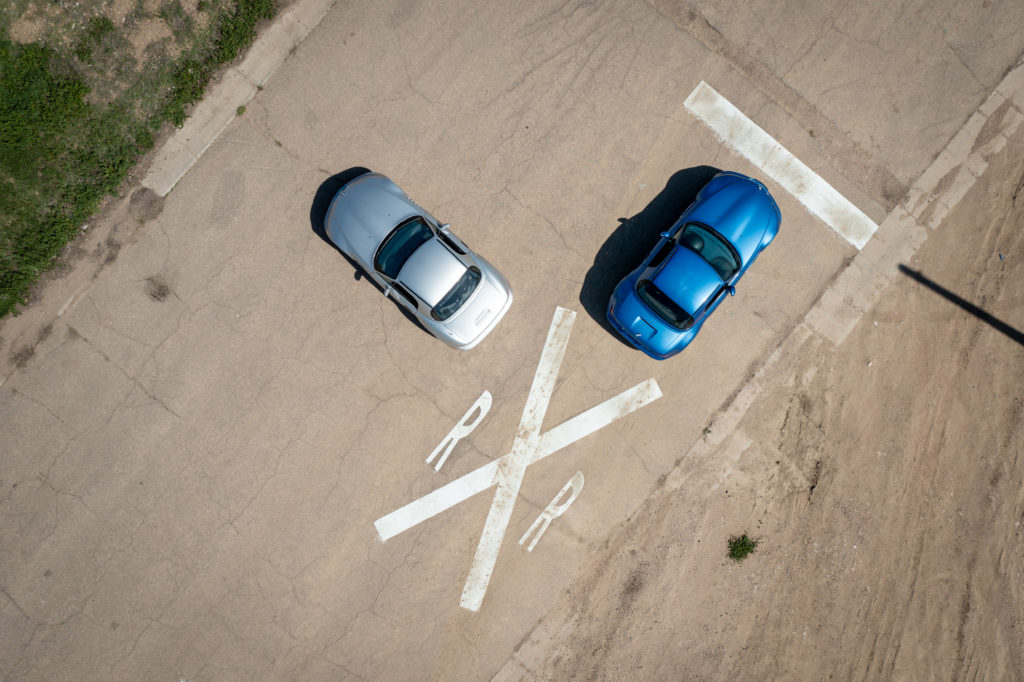
Silver and blue both look fantastic in mid-day light.
Once under way, the M roadster is the clear winner in the power, handling, and braking department. It is significantly more agile than the Z3 3.0i, it has crisper edges, and it feels like it has greater power advantage than its paper figures allow. Like a proper M car, the M roadster is a sum greater than its parts, in which the little performance improvements compound each other exponentially.
This Z3 3.0i closes the gap significantly over a base model, with the sport seats and limited-slip differential, but this one really shines for its mileage and condition. With 80,000 miles on the odometer, this M roadster was clearly loved by its owners, but the Z3 3.0i had half of the miles and only one owner, ever. That owner ordered it to spec and lovingly cherished it in the two decades that followed. It is as near a new Z3 as I have seen in the dozens that have passed through my side business. When the owner passed away, his wife needed some time to let it go, but when that time came, her only request was that I find an owner for it who would treat it as he had. Given its condition, that was any easy task.
Both Z3s sold within a few hundred dollars of each other, highlighting the strength of the current market and appreciation for well-cared for examples. There was no wrong choice with either car; contemplating differences between them is an act of splitting hairs. As with any BMW, previous ownership is always key. In addition to typical BMW oil leaks, VANOS health, cooling-system age, and suspension wear, common Z3-specific issues to look for are fifth-gear lean (shift-pin bushings and detents), excessive seat-bushing play, glovebox sag, broken seat-belt clips, rear-window condition, and, most important, the trunk-floor spot welds above the differential mounting points. All of these can remedied, but it’s always best to buy the most car your budget allows up front rather than pay for it on the backside of the purchase.
I thoroughly enjoyed my time with both Z3s, and it was highly satisfying to share the experience of each as the new owners drove off into the sunset.—Alex McCulloch.
[Photos courtesy of Peter Thompson.]

